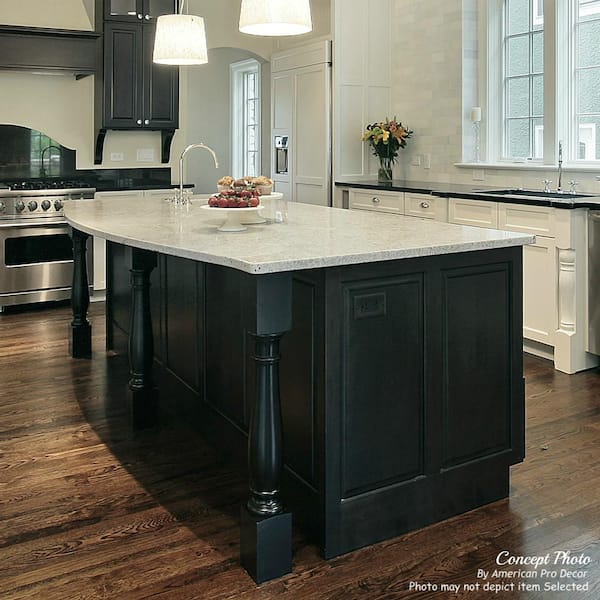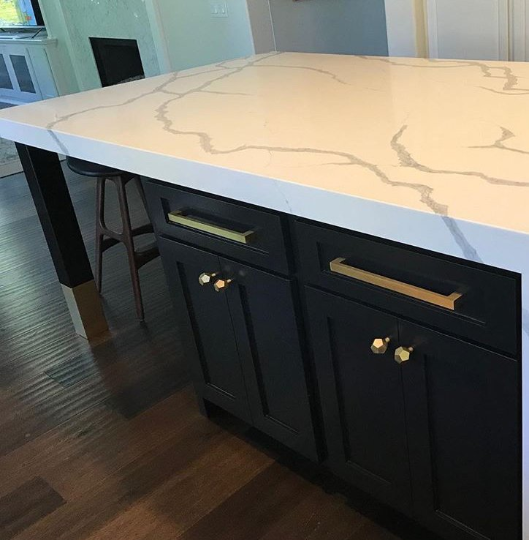Kitchen Island Legs: Boost Your Kitchen with Strong Support
Wiki Article
Important Tips for Picking the Perfect Eating Table for Your Kitchen
Picking the best dining table for your kitchen area is more than just an issue of preference; it requires a thorough understanding of your space and requirements. The shape of the table plays a critical duty; while rectangular tables match bigger locations, round ones foster affection, and extendable options provide adaptability. The table must harmonize with your kitchen area's aesthetics and suit your family comfortably.Action Your Space
Choosing the ideal table begins with a thorough evaluation of your readily available space. This fundamental action guarantees that the table not just fits conveniently within the area however likewise complements the total layout and performance of your eating location. Begin by gauging the dimensions of the space, thinking about entrances, windows, and any kind of existing furniture. This will aid you establish the optimum allowable size for your table.It is vital to leave sufficient area for chairs to be drawn out and for people to relocate around the table without obstruction. A basic guideline of thumb is to enable at least 36 inches of clearance from the edge of the table to the nearest wall surface or piece of furniture.
In addition, assume about the variety of people you generally delight and whether you require extra space for guests. Deciding for an extendable table can supply flexibility, allowing you to accommodate varying numbers of diners. By accurately measuring your space, you lay the foundation for picking a table that enhances both the visual appeals and capability of your eating location.
Pick the Right Shape

On the other hand, round tables are exceptional for smaller sized kitchens or intimate gatherings, as they advertise conversation by allowing everyone to deal with each other. They likewise offer a sense of coziness and can fit well in tighter areas because of their lack of sharp edges. Oval tables supply the very best of both globes, incorporating the length of rectangular tables with the intimacy of round ones, making them flexible for various settings.
Square tables are one more option, especially matched for square-shaped spaces. They produce a modern and symmetrical appearance, fostering an equal dining experience for all seated. They may be much less useful for larger events unless they come with expansions. Eventually, the shape you choose must straighten with your room measurements and way of life to make certain both type and feature.
Material Considerations
When choosing a table, product factors to consider are critical in establishing the table's resilience, maintenance requirements, and total aesthetic. Timber is a traditional selection, supplying classic charm and robustness. Woods like oak, mahogany, and walnut investigate this site are especially long lasting, though they can be costly. kitchen island legs. Softwoods, such as yearn, are a lot more budget friendly however may be susceptible to dents and scratches.Glass-topped tables give a contemporary, sleek appearance and can make a room appear larger due to their openness. They need frequent cleansing to prevent finger prints and spots. In addition, tempered glass is advised for its added strength and safety and security.

Last but not least, composite materials like MDF (Medium-Density Fiber board) or plywood are affordable alternatives. These materials can resemble the appearance of strong wood but might not supply the very same long life. They are usually easier to clean yet can be susceptible to water damage otherwise effectively sealed.
Inevitably, the choice of material must line up with your kitchen area's design, your lifestyle requires, and your budget plan restrictions. (kitchen island legs)
Seating Capability and Comfort
Just how do you identify the ideal seating capacity and comfort for your eating table? For a household of four, a rectangular table of 48 inches long or a round table Bonuses with a 48-inch size is typically sufficient.The elevation of the table should preferably be around 30 inches, giving a well balanced ergonomic position for seated restaurants. Chairs ought to have a seat elevation of 18 to 20 inches to make sure a comfy eating position.
Design and Looks
Choosing a table that matches your style and appearance involves stabilizing individual preference with the existing decor of your dining space. The table is often the focal point of the cooking area, and its layout ought to complement the overall style of the space. Whether your cooking area flaunts a modern-day, minimal appearance or a rustic, farmhouse appeal, the table you pick should balance with these components to develop a natural and inviting environment.Think about materials carefully; timber uses an ageless appeal and can vary from abundant mahogany for a traditional look to lighter oak for a modern feeling. Steel and glass tables, on the various other hand, can introduce a smooth, industrial edge to your kitchen area. Do not forget the table's form-- rectangular tables are traditional and functional, while round and oblong options can foster an extra intimate eating experience.
In addition, pay attention to information and finishes. More Info A troubled coating could add character and heat, whereas a glossy surface can add to a tidy, modern visual. Ultimately, your table must not just fit effortlessly into your kitchen's layout however also mirror your personal style, elevating the room both functionally and aesthetically.
Final Thought
To conclude, choosing the perfect eating table for a kitchen requires mindful assessment of space, form, material, seating ability, and visual consistency. Making sure a minimal clearance of 36 inches helps with comfortable activity, while the selection of shape boosts spatial dynamics. Product option influences longevity and design, making it vital to straighten with the cooking area's overall aesthetic. Eventually, an appropriate table cultivates a welcoming ambience and fits the home pleasantly, therefore improving the eating experience.
When selecting a dining table, product factors to consider are paramount in identifying the table's durability, maintenance needs, and overall visual. For a household of four, a rectangle-shaped table of 48 inches long or a round table with a 48-inch diameter is typically enough.
Do not ignore the table's form-- rectangular tables are flexible and classic, while round and oblong options can cultivate a more intimate dining experience. kitchen island legs.
Report this wiki page